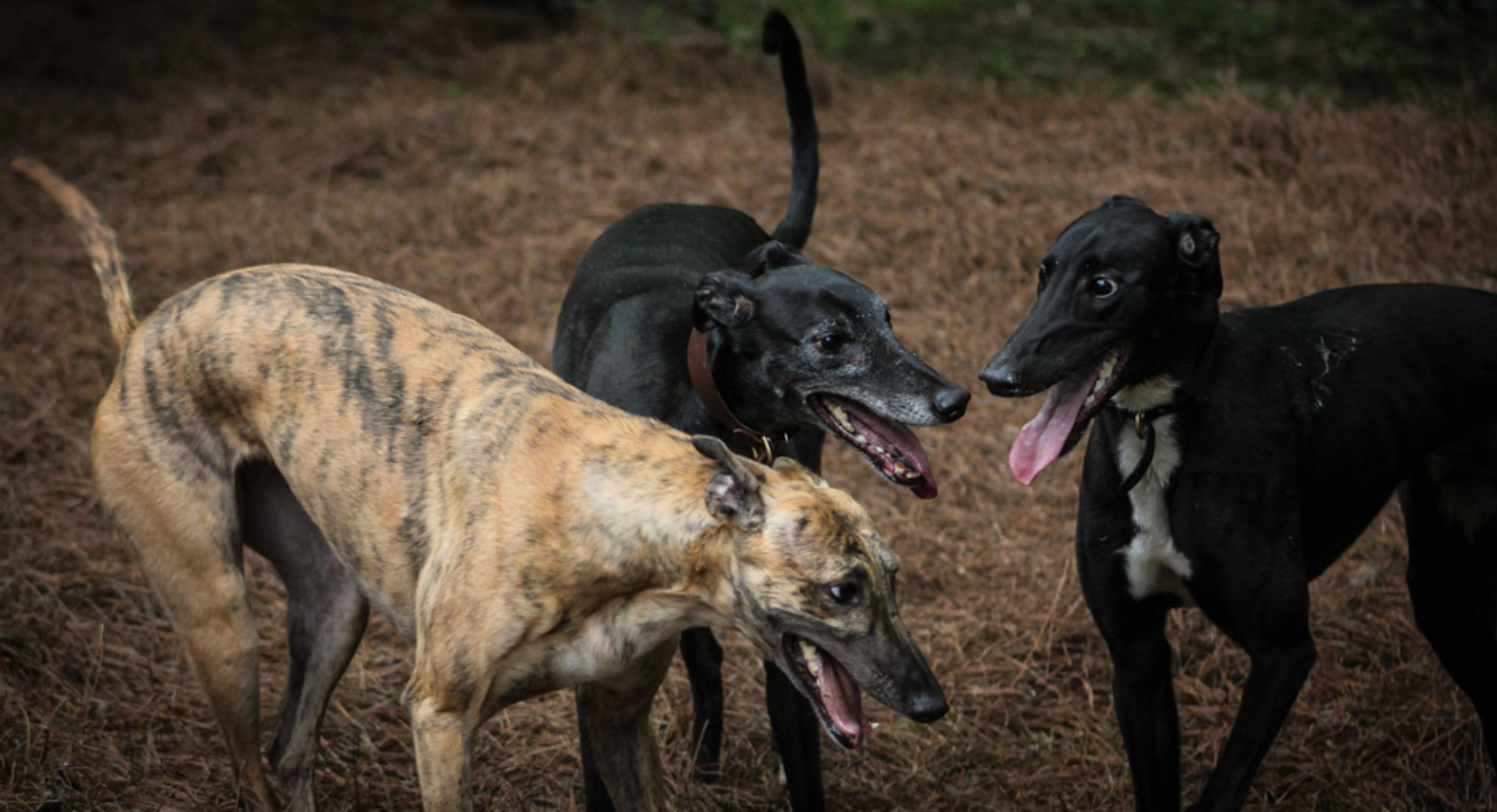Feature image from The Greyhound & the Hare
For many years it was thought that the Greyhound originated in Egypt and the Middle East. However, there were written accounts in the 1800’s stating that the Greyhounds originated from Celtic lands. In 2004 this was proven. The paper titled “The Genetic Structure of the Purebred dog” evaluated the molecular structure and differences in 85 breeds of dog. This study proved that the Greyhound, along with the Borzoi, Irish wolfhound, and other herding breeds, were of European descent and in fact were genetically different from the African and Middle Eastern sighthounds.
There are accounts of the Greyhound noted throughout British history. In Shakespeare’s play King Henry V, Shakespeare uses the Greyhound in the King’s monologues prior to battle. Henry V said to his men, “I see you stand like greyhounds in the slips, straining upon the start. The game’s afoot.” Shakespeare compared Henry V’s armies to Greyhounds because he knew the keenness, tenacity, and passion of the Greyhound.
The Tudor family was also fond of the Greyhound. Henry the VII’s coat of arms included both a red dragon as well as a white Greyhound. Henry the VIII had a great love of coursing, then called hunting. It is noted that he converted some of his land into a course and it was used by two coursing societies. However, that land has now been repurposed into a golf course.

In the sixteenth century Queen Elizabeth I and Lord Norfolk developed the first coursing rules, “The laws of the leash.” These rules formalized the rules for coursing, focusing on the scoring of the Greyhound’s performance, rules for the slipper, and the handling of the hare.
Coursing focuses on the Greyhound’s greatest skill, the speediness of the chase. More points are awarded to the Greyhound for speed and ability to pass another Greyhound than actually taking-out the hare.
Throughout the Tudor reign, the Forest Laws were in effect; these laws were established in the middle ages and strictly enforced by William the Conqueror. People and dogs caught breaking these laws were mutilated and often times killed.
Coursing continued to be a sport of the nobles, waxing and waning in popularity throughout the reigns of Charles I and II. During the reign of George the III, in the eighteenth century, coursing no longer was a private sport for the nobles but a sport for gentlemen. Most of the participants coursed either Greyhounds or Whippets and made wagers on their hounds.
In 1776 The Lord of Orford in Swaffham, England created the first coursing club. The original “laws of the leash” created by Lord Norfolk were still in effect and used. Interest in coursing grew and more and more clubs originated.

By the time of the industrial revolution, more people had free time and money to participate in hobby sports. Coursing was also much cheaper than foxhunting. Greyhounds and Greyhound coursing took off. Participants of the sport realized that if they had a winning hound there was additional income for breeding and selling puppies. While these breedings were documented within the kennels, there was not an official Greyhound stud-book until 1882.
So why is this a big deal? Coursing gave us the modern day Greyhound. The competition of coursing created a well-engineered dog that was thrilling to watch and fast. The history of our beloved Greyhound gives us more insight into why people continued to breed Greyhounds and created the Greyhound that lives with us today.
There is still more to the story. With the invention of the mechanical lure Greyhound Racing was created. I will talk about racing in part two of this series, stay tuned!
Sources:

